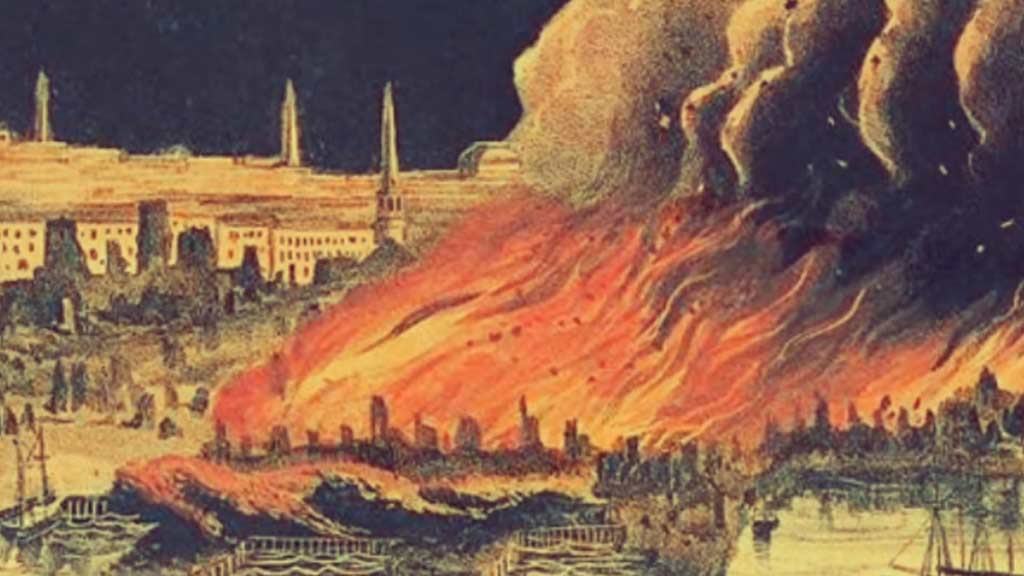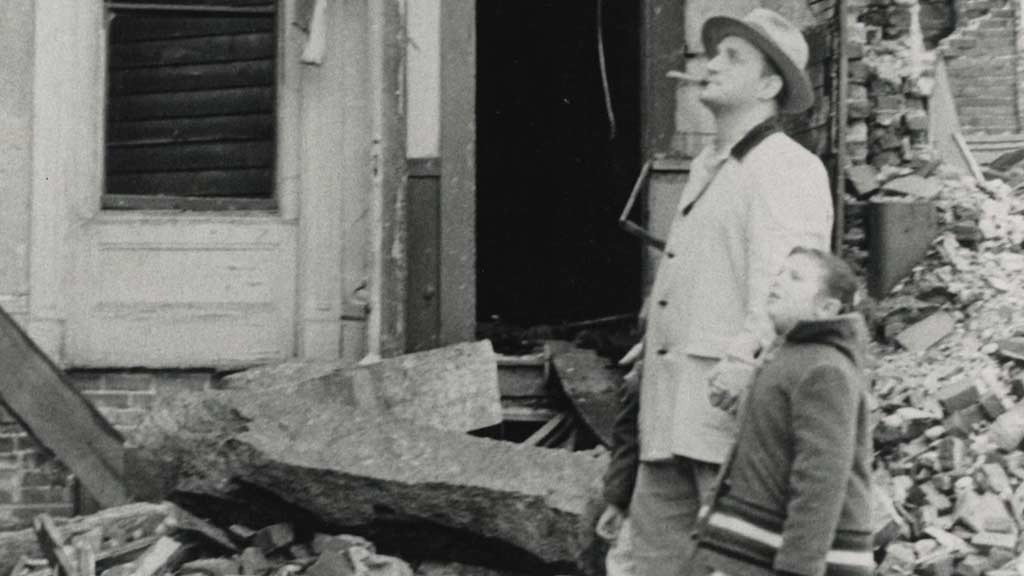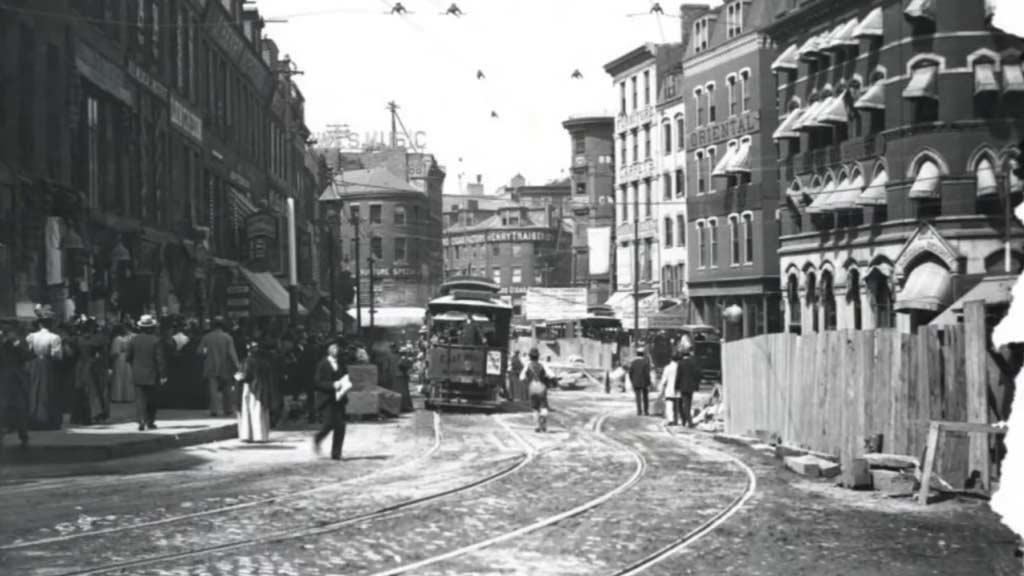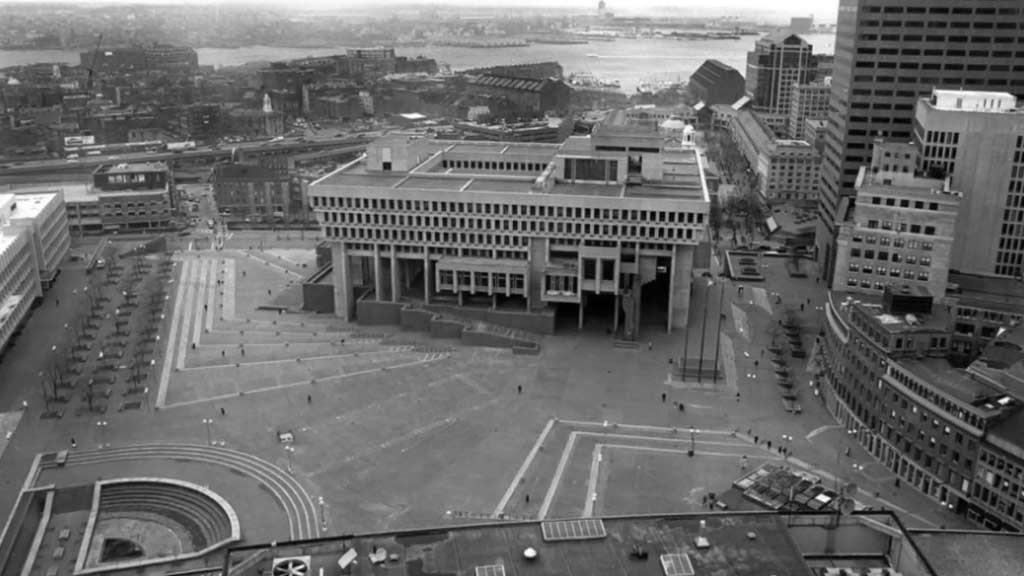The history of Scollay Square in Boston serves as a poignant reminder of the dynamic evolution of urban landscapes.
Once a vivid hub of entertainment and commerce, Scollay Square thrived as a cultural melting pot, attracting visitors from far and wide.
However, its demolition in the 1950s and 1960s marked the end of an era, as urban renewal initiatives reshaped the neighborhood into Government Center.
Despite its physical disappearance, the spirit of Scollay Square lives on in the collective memory of Bostonians and in the historic artifacts that document its rich history.
Its legacy serves as a testament to the ongoing tension between progress and preservation in urban development.
Where Is Scollay Square in Boston?
Scollay Square, a once vivid entertainment district in downtown Boston, Massachusetts, stood at the intersection of Cambridge, Court, and Tremont Streets, the address is 21 Beacon St, Boston, MA 02108, United States.
Today, its legacy is embodied at 21 Beacon Street, where an American bistro thrives. near the Massachusetts State House and Government Center, this establishment serves up classic surf ‘n’ turf, brunch delights, and timeless cocktails in a vintage ambiance.
While the original Scollay Square may be a memory, this eatery revives its essence, inviting patrons to relive the charm of yesteryears in a modern culinary setting.
Scollay Square Boston History Timeline
Scollay Square was a historic neighborhood in Boston, Massachusetts, known for its vivid entertainment scene, diverse culture, and colorful history.
Here’s a timeline highlighting significant events in the history of Scollay Square:
Early Settlement (17th Century)

During the 17th century, Boston was established by Puritan settlers, marking one of the earliest European settlements in North America.
The area that would eventually become Scollay Square was initially marshy and undeveloped, but its strategic location near the waterfront made it attractive for trade and commerce.
As Boston grew, so did the surrounding neighborhoods, gradually evolving from wilderness to a bustling urban center.
Development (18th Century)
Throughout the 18th century, Boston experienced rapid development as a major port city and center of trade. The area around what would later become Scollay Square saw the construction of warehouses, docks, and businesses catering to the maritime industry.
Taverns and inns also emerged to accommodate travelers and sailors passing through the city. This period laid the foundation for the future growth and prosperity of the neighborhood.
Great Fire of 1872

The Great Fire of 1872 was a catastrophic event that swept through several neighborhoods in Boston, including parts of what is now Scollay Square.
The fire, which started in the city’s financial district, quickly spread due to strong winds and the predominance of wooden structures.
While many buildings were destroyed, the resilience of the city’s residents led to a remarkable rebuilding effort.
The reconstruction of Scollay Square following the fire set the stage for its transformation into a vivid commercial and entertainment district.
Immigrant Influx
In the late 19th and early 20th centuries, Boston experienced a significant influx of immigrants, particularly from Ireland and Italy.
Many of these immigrants settled in the neighborhoods surrounding Scollay Square, seeking better opportunities and contributing to the cultural tapestry of the area.
With them, they brought their customs, languages, and traditions, shaping the character of the community and infusing it with a rich diversity that would define its identity for decades to come.
20th Century
By the early 20th century, Scollay Square had emerged as a bustling entertainment district, known for its theaters, music halls, and lively nightlife.
The square became a magnet for people from all walks of life, drawn by its vivid atmosphere and diverse offerings.
In addition to entertainment venues, Scollay Square was home to a variety of businesses, including restaurants, cafes, and shops, which further enriched its cultural landscape and made it a destination for locals and visitors alike.
Urban Renewal (1950s)

The 1950s marked a period of urban renewal and redevelopment in many American cities, and Boston was no exception.
The city government embarked on ambitious plans to modernize downtown areas, including the transformation of Scollay Square.
Despite opposition from some preservationists and community members, large-scale demolition and redevelopment projects were undertaken, reshaping the physical and social fabric of the neighborhood.
Demolition and Transformation
During the 1950s and 1960s, many historic buildings in Scollay Square were demolished to make way for new development projects, including the construction of Government Center and Boston City Hall.
The once bustling streets and lively entertainment venues were replaced by modernist architecture and wide thoroughfares, fundamentally altering the character of the neighborhood.
The transformation of Scollay Square into Government Center signaled the end of an era and marked the beginning of a new chapter in Boston’s urban history.
Decline and Disappearance

As Scollay Square was transformed into Government Center, the vivid community that once thrived there began to dissipate.
The closure of theaters and entertainment venues, coupled with the loss of historic landmarks, contributed to the decline of the neighborhood’s cultural significance.
While the name “Scollay Square” faded into history, its legacy remains a poignant reminder of Boston’s ever-changing urban landscape and the ongoing tension between preservation and progress.
Scollay Square Then and Now
Scollay Square, once a vivid and bustling neighborhood in the heart of Boston, has undergone significant transformation over the years.
From its heyday as a hub of entertainment and commerce to its present incarnation as part of Government Center, the evolution of Scollay Square reflects the changing dynamics of urban life in Boston.
Let’s take a closer look at Scollay Square then and now:
| Aspect | Scollay Square Then | Scollay Square Now |
| Culture and Entertainment | Scollay Square was renowned for its theaters, music halls, and vivid nightlife. It was a popular destination for locals and visitors alike, offering a diverse array of entertainment options. | While the entertainment scene of old Scollay Square has faded, Government Center occasionally hosts cultural events and festivals. The area is now primarily known for its governmental buildings and offices. |
| Architecture | The architecture of Scollay Square was characterized by a mix of historic buildings, including theaters, hotels, and shops. The narrow streets and bustling storefronts contributed to its unique charm. | The redevelopment of Scollay Square in the 1950s and 1960s led to the construction of modernist buildings, including Boston City Hall and the surrounding Government Center complex. The area is now defined by its imposing government structures and open plazas. |
| Community | Scollay Square was a vivid and diverse community, home to a mix of residents from various cultural backgrounds. Its bustling streets and bustling markets fostered a strong sense of community among its inhabitants. | The sense of community that once thrived in Scollay Square has been replaced by the bureaucratic workings of Government Center. While people still frequent the area for work and official business, it lacks the lively atmosphere of its predecessor. |
| Economic Activity | The commercial district of Scollay Square was a hub of economic activity, with shops, restaurants, and businesses catering to the needs of residents and visitors alike. It was a bustling center of trade and commerce. | While Government Center is home to various government offices and businesses, it lacks the vivid commercial scene of old Scollay Square. Many of the shops and businesses that once lined its streets have been replaced by government buildings and plazas. |
| Legacy | Despite its disappearance, the legacy of Scollay Square lives on in the memories of those who remember its heyday. It is remembered as a lively and dynamic neighborhood that played a significant role in the cultural life of Boston. | The name “Scollay Square” may have vanished from the maps, but its legacy endures in the history of Boston. While the physical landscape has changed, the spirit of Scollay Square lives on in the ongoing dialogue about urban renewal and preservation. |
What Happened to Scollay Square?

Scollay Square, once a bustling hub of entertainment, culture, and commerce in Boston, underwent a dramatic transformation in the mid-20th century.
Urban Renewal Initiatives
In the post-World War II era, urban renewal initiatives swept through American cities, aiming to revitalize urban cores and address perceived blight.
Boston, like many other cities, embarked on ambitious plans to modernize its downtown areas. These initiatives sought to accommodate the changing needs of a growing population and adapt to evolving urban trends.
Targeting Scollay Square
Scollay Square, with its narrow streets and aging infrastructure, became a focal point of Boston’s urban renewal efforts. While some viewed the square as a historic gem worthy of preservation, others saw it as a symbol of decay and neglect.
City planners identified it as a prime candidate for redevelopment, envisioning a modern urban center that would rival those of other major cities.
Opposition and Demolition
The proposal to demolish Scollay Square met with fierce opposition from preservationists, historians, and local residents who cherished its historic significance.
They argued passionately for the preservation of the neighborhood’s architectural heritage and cultural legacy.
Despite their efforts, however, the wheels of redevelopment were set in motion, leading to the eventual demolition of many beloved landmarks.
Creation of Government Center
Out of the rubble of Scollay Square emerged Government Center, a sprawling complex of government buildings and public spaces.
The centerpiece of this development was Boston City Hall, a striking example of modernist architecture that stood in stark contrast to the historic buildings it replaced.
Government Center was envisioned as a hub for municipal activities, housing city offices, courts, and public amenities.
Transformation and Decline
As Government Center took shape, the character of the neighborhood underwent a profound transformation.
The once-thriving community that had flourished in Scollay Square began to disperse, its vivid streets and lively establishments replaced by sterile government offices and wide thoroughfares.
The closure of theaters, music halls, and other entertainment venues further contributed to the decline of the neighborhood’s cultural vivicy.
Legacy of Scollay Square
Though the physical landscape of Scollay Square has been forever altered, its legacy endures in the memories of those who experienced its heyday and in the historic artifacts that document its rich history.
Despite the passage of time, Scollay Square remains a symbol of resilience, reminding us of the ongoing tension between progress and preservation in the ever-changing urban landscape.
FAQs
What was Scollay Square Boston?
Scollay Square was a historic neighborhood in downtown Boston, known for its vivid entertainment scene, diverse culture, and bustling commercial activity.
When was Scollay Square at its peak?
Scollay Square reached its peak popularity in the early to mid-20th century. During this time, it was a thriving hub of activity, attracting people from all walks of life to enjoy its theaters, vaudeville shows, and nightlife.
Why was Scollay Square demolished?
Scollay Square was demolished as part of urban renewal initiatives in the 1950s and 1960s. City planners aimed to modernize downtown Boston and address perceived blight in the area.
What replaced Scollay Square?
Scollay Square was replaced by Government Center, a modernist complex of government buildings and public spaces.
Wrap Up
Tn the heart of downtown Boston, Scollay Square stood as a vivid testament to the city’s rich cultural tapestry and dynamic urban life.
For decades, it pulsated with the energy of theaters, music halls, bustling shops, and diverse communities, earning its reputation as a hub of entertainment and commerce.
However, the history of Scollay Square is not merely one of celebration but also of transformation. In the mid-20th century, the square underwent a profound metamorphosis as urban renewal initiatives swept through American cities.
This introduction sets the stage for exploring the rise, fall, and enduring legacy of Scollay Square in Boston’s storied history.
Jaclyn Lowe